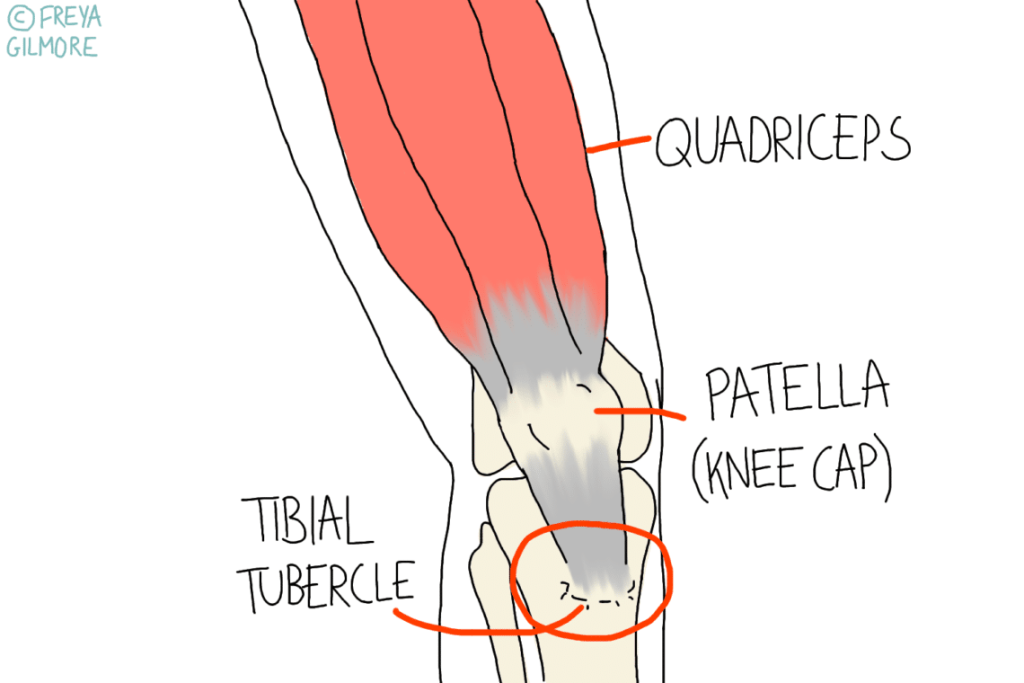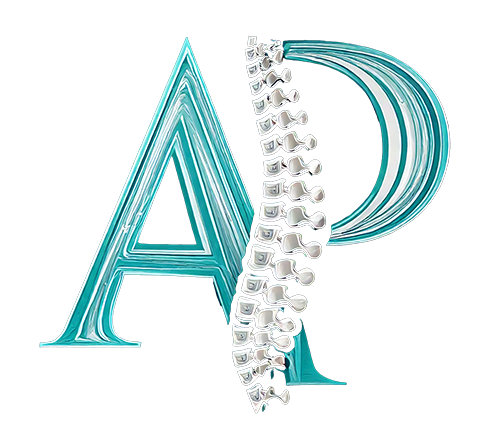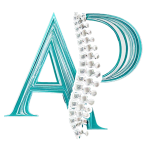Osgood Schlatter Disease
A common knee complaint among adolescents is Osgood Schlatter Disease (OSD). It is more prevalent among active people, and although the pain always resolves, there is usually a palpable bony lump on the knee for life. This lump is often an incidental finding in adult patients who present with another issue- they may not know they ever had the condition.

What Happens in Osgood Schlatter Disease?
The muscles of the quadriceps (front of the thigh) converge into the quadricep tendon at the front of the knee. The knee cap sits within this tendon, and the tendon joins onto the front of the shin bone, right at the top. Exactly where the tendon meets the bone is a growth plate. This is like a cross between cartilage and bone, which eventually hardens when the area has finished growing (in the late teens). Girls tend to develop OSD at a slightly younger age than boys, as their growth plates mature a year or two earlier. Typically we expect their resolution to be earlier than boys’ too. Onset anywhere between about 9 and 14 years of age is within the expected range.
If the quadriceps are under a lot of strain, they can pull on this soft area. This causes pain, inflammation, swelling, and sometimes bone avulsion. Avulsion is where a small part of the bone is pulled away in a micro-fracture. The precise area is likely to be tender. A few bursae are often irritated by the process of OSD, in which case the pain may be more widespread.
Quadriceps strain could be due to increased activity, especially sports that involve lots of running, jumping, or kicking. Growth spurts may also be significant if the thigh bone grows rapidly, causing relative tension on the muscles.
Other areas in the body can undergo a similar process. The process that happens in OSD is traction apophysitis. This literally means inflammation and pulling on the growth plate. When it occurs in the heel, it is known as Sever’s disease.
Managing OSD
OSD is aggravated by activity that demands strong and sudden contraction of the quadriceps. Running and jumping sports are particularly significant. Proper stretching and exercises pre and post sport are important. Cool compresses may also help. Massage techniques for the quadriceps are recognised as part of a conservative treatment plan. Completely stopping sport is often not realistic, and it certainly is not a guaranteed cure. However an exercise plan with enough rest days to reduce irritation may be sensible. Your osteopath can help devise this.
Ultimately, symptoms will largely pass as the growth plate matures. However, it is noted that people who had OSD may be more likely to present with other issues later in life. This may or may not be statistically significant, but any strategies that minimise the bony change to the area could be useful. If you are an adult with a history of knee problems including OSD, your osteopath will assess the body as a whole to work out how these conditions are liked together. You may find it beneficial to seek osteopathic treatment to manage your symptoms and then to help keep them at bay.

